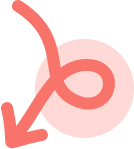9,2
/10
customer satisfaction

Did you know that carbohydrates consist of sugars and that these sugars are converted into glucose? Glucose is the fuel that (after alcohol) is burned first. Especially muscles and the brain like to use glucose. Excess glucose is stored as glycogen, a long chain of sugars that can be stored in the liver and muscles. Is this stock full? Then you store new glucose from your diet as fat. The fat storage system is a very useful system in times of starvation. But today there is often no more than a few hours between meals …
Different carbohydrates
There are different types of carbohydrates that differ from each other in complexity and how the body absorbs them. But they also have one thing in common: carbohydrates, with the exception of fiber, are converted into glucose.
The different types of carbohydrates are:
Glucose, weight and energy
Carbohydrates are converted into glucose in the body and stored in the liver and muscles to serve as fuel when our body needs it. The excess glucose is converted into fat by means of insulin. There are several types of fat in the body, the best known are visceral (between organs) and subcutaneous (subcutaneous) fat. Visceral fat is the type of fat that collects behind the abdominal muscles and cannot be grasped. Too much visceral fat is unhealthy and can lead to health risks. Peaks in glucose are often followed by dips. This can cause the well-known “after lunch / dinner dip” and again a feeling of hunger. Do you ever suffer from concentration problems after lunch? This may be due to a wrong choice of diet. Because we work from home more often due to corona and automatically have more problems with concentration, choosing the right lunch can help you through the day.
So we want to avoid the following situation:

We prefer to choose food that does not cause an excessive increase and decrease:

How do you put together a balanced meal that neither leads to a significant increase nor a sharp drop? Since everyone reacts differently to food, you may have to make adjustments to greater or lesser extent. It does not necessarily mean that you should exclude all sugars or carbohydrates from your diet. Adjusting the types of carbohydrates, the combination with the right fats, portion sizes and the right amount of exercise (think of a walk after dinner, for example) can make all the difference for you.
